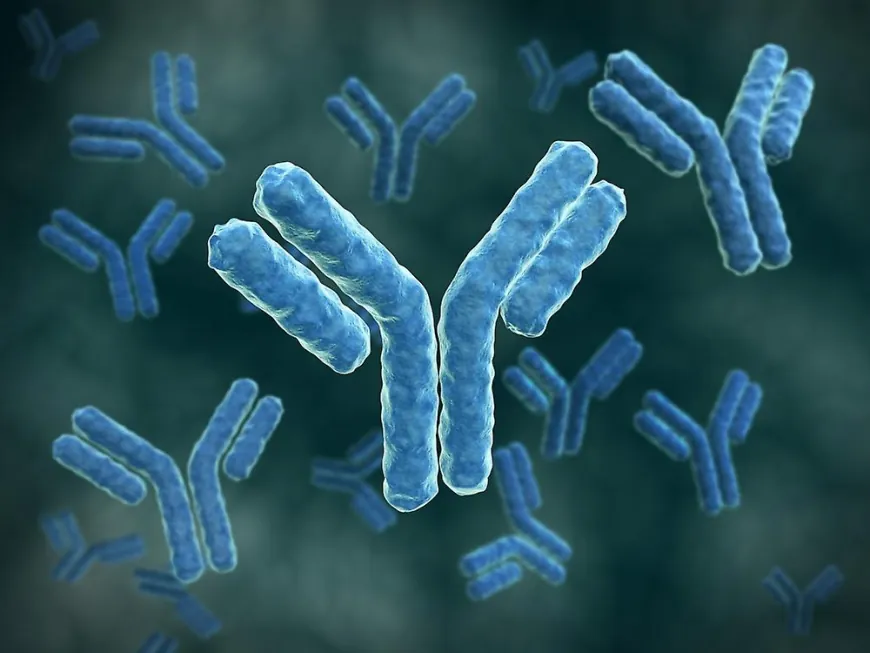Immunoglobulin: Understanding The Role of Immune gamma globulins in The Immune System
The human immune system uses a variety of tools to protect the body from foreign pathogens. A key component of this defense network is immune gamma globulins—antibodies that help identify and neutralize invading microorganisms.

The human immune system uses a variety of tools to protect the body from foreign pathogens. A key component of this defense network is immune gamma globulins—antibodies that help identify and neutralize invading microorganisms. Made by white blood cells called B lymphocytes or B cells, immune gamma globulins are Y-shaped proteins that circulate in the bloodstream and lymph fluid. They act as sentries, patrolling the body for anything they recognize as non-self. When an immune gamma globulin encounters its specific antigen (the term for the target microbe or substance), an immune response is triggered to eliminate the threat. This article explores the structure and functions of immune gamma globulins, as well as how they work together with other immune cells and molecules.
Immunoglobulin Structure
All Immunoglobulin share a basic architecture comprised of four peptide chains—two identical heavy chains and two identical light chains bonded together by disulfide bridges. The specific type of amino acid sequences in the variable regions at the ends of the immune gamma globulin confer its ability to bind to a single antigen. These regions allow for recognition and attachment capabilities. The constant regions make up the rest of the molecule and help classify immune gamma globulins into different classes based on their biological activity. The major classes in humans are: IgG, IgA, IgM, IgD, and IgE.
Antibody Functions
The primary function of immune gamma globulins is to neutralize pathogens by tagging them for destruction. They accomplish this through various methods depending on class:
- IgG is the most abundant antibody in the blood and extracellular fluid. Its functions include directly neutralizing bacterial toxins and defending against viral and bacterial infections.
- IgA dominates mucosal surfaces like the respiratory, gastrointestinal, and genitourinary tracts. It protects entry points against microbes and prevents colonization.
- IgM is primarily involved in the first response to infection and is highly effective at activating the complement system. It forms pentamers instead of monomers.
- IgD and IgE play mainly regulatory roles in modulating allergic responses and memory immunity.
Antibodies work by binding to pathogens, which can inhibit their ability to infect cells or cause harm. They can also facilitate destruction by opsonization, where microbes become coated in antibodies and are more readily identified and ingested by phagocytes. This tagging for destruction allows the body's immune defenses to neutralize the antigen threat.
Immune gamma globulins and Immune Cell Interactions
B cells are not the sole mediators of the immune response against infection. Antibodies coordinate efforts with other immune system constituents. For example, when an IgG molecule attaches to an extracellular bacterium, it recruits neutrophils—aggressive phagocytic cells that ingest and digest microbes. IgG and complement proteins also support interactions between B cells and helper T cells to stimulate rapid clonal expansion of antibody-producing plasma cells during secondary immune responses. Memory B cells are generated as part of adaptive immunity, allowing for lifelong protection against previously encountered pathogens. Well-orchestrated cooperation between immune gamma globulins, phagocytes, lymphocytes, and complement sustains host defense.
Disorders Involving Immune gamma globulins
Abnormal levels or functions of immune gamma globulins underlie several diseases. Immunodeficiencies marked by low antibody counts increase infection vulnerability. conversely, Overproduction of antibodies may induce autoimmunity or conditions where antibodies mistake normal tissues for foreign. Examples include:
- Common variable immunodeficiency involves low IgG, IgA, and/or IgM levels and recurrent lung, sinus, and bronchial infections.
- Selective IgA deficiency occurs in 1:600 individuals and predisposes to gastrointestinal illnesses.
- Hyper-IgM syndrome results from impaired IgG/IgA class switching and severe infections.
- Rheumatoid arthritis and lupus feature high levels of autoantibodies that attack joint and connective tissues.
- Blood group agglutinins wrongly target antigens on transfused red blood cells in transfusion reactions.
Carefully regulated antibody secretion and specificity are therefore essential for health. Disruptions to B cell pathways and immune gamma globulin metabolism can enable disease. Understanding these intricate relationships remains an active area of immunological research.
Immune gamma globulins are a pivotal line of protection within the immune system. By adapting to recognize an incredible array of antigens, antibodies promote swift clearance of foreign pathogens from the body. They do so through direct neutralization, engaging helper immune cells via opsonization or complement activation, and enabling generation of immunological memory. Despite existing as single-target molecules, immune gamma globulins display impressive versatility and coordination skills that keep humans defended against constant microbial challenge. Further examination continues to illuminate their important role in immunity and immunopathology.
Get more insights on Immunoglobulin
For Deeper Insights, Find the Report in the Language that You want
About Author:
Ravina Pandya, Content Writer, has a strong foothold in the market research industry. She specializes in writing well-researched articles from different industries, including food and beverages, information and technology, healthcare, chemical and materials, etc.












